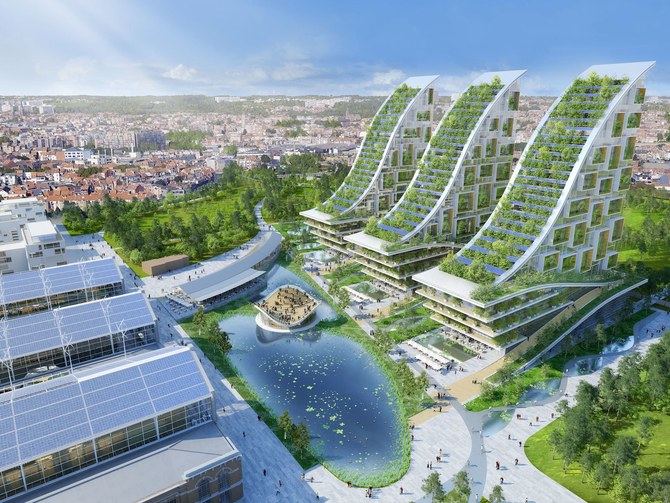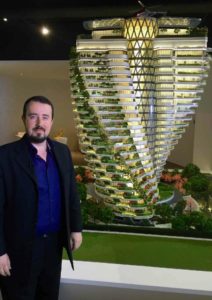Architect Vincent Callebaut has plans for an eco-friendly regeneration of an abandoned district in the capital of Belgium.
If you’ve recently found yourself infatuated with a rendering of a futuristic eco-district, odds are it came from the desk of Belgian architect Vincent Callebaut.
The 40-year-old designer has made quite a name for himself over the past ten years, churning out more than 50 boundary-pushing projects, each helping to set today’s standards for sustainable architecture and urban planning. His latest?
In January of 2017, Callebaut released plans for the green renewal of Brussels’ abandoned Tour & Taxis industrial district, transforming it into a neighborhood that’s as aesthetically stunning as it is environmentally friendly.
Tour & Taxis is a large former industrial site on the Brussels Canal, immediately adjacent to Sint-Jans-Molenbeek, just northwest of the city centre and about a kilometre west of the Northern Quarter financial district. It sits on approximately 40 hectares (100 acres) of former wetlands. The site comprises large warehouses and offices surrounding a former train station and its spacious central hall.
The buildings on the site are made of brick, glass and wrought iron, examples of the quality of 19th century architecture. Though it was long disused following its loss of importance as a shipping and customs hub, the site has now been partially restored, and is used for large cultural events, including Couleur Café and the Brussels Design Market, as well as office space.
The area lost its industrial utility with the progressive lifting of Europe’s custom borders, but the Tour & Taxis neighborhood is currently undergoing a major renewal, and is once again on the verge of becoming an important vehicle for the economic and cultural development of Brussels, bringing in a sense of well-being and community.
The warehouses and sheds have been repurposed with corporate sustainability and the knowledge economy in mind, and a dedication to energy saving and the reuse of renewable energies.
The ultimate goal is to create a genuine mixed-use eco-neighborhood where it is pleasant to be, work, live and play; an eco-neighborhood along the Brussels canal, articulated around three axes: revitalization of the built heritage, sustainable communities, and water.
All images via Vincent Callebaut Architecture.
See full article by Carrie Hojnicki in Architectural Digest.


